Optimization of a Single-Switch Wireless Power Transfer Circuit Based on a Multi-Coil Array
Abstract
:1. Introduction
- a.
- The compensation network parameters can be adjusted to achieve constant voltage output for the system.
- b.
- The resonant frequency of the system is only related to the transmitter and receiver which are not affected by the change in mutual inductance or load, which will not be detuned easily when the system works.
- c.
- The LCC topology has a high-quality index of merit as a high-order network and a good filtering effect on high harmonics. The voltage gain is adjustable, and it requires a low input voltage level.
- (1)
- To improve the THD of the system’s input current, the working modes and parameters of different resonant circuits are analyzed, and the P# type LCC-S compensation network is determined. We suggest a P# type LCC-S compensation network suitable for single-switch resonant inverter, specifically for multi-coil single-switch wireless power transfer.
- (2)
- To improve the transmission power of the system, three coils are input in parallel to increase the transmission power of the system. Aiming at the topology of three-coil parallel input, Fourier expansion analysis is carried out to obtain the mathematical model of three-coil compensation network.
- (3)
- To suppress the ripple of the input current, the effective values of the fundamental and harmonic components are obtained through a frequency domain analysis of the input current. Meanwhile, the relationship between the input current of the coil and input voltage, coil mutual inductance and negative load impedance under the unbalanced coupling of three turns is deduced. In view of the topology of the three-coil parallel input, the input current ripple is suppressed using the method of phase shift control. The system efficiency is improved.
2. System Structure and Operation Process
2.1. The Circuit Model of Triple-Coil Single-Switch Resonant Inverter WPT System
2.2. Analysis of Circuit Model Operation Mode of Three Groups of Single-Switch Resonant Inverter WPT System
2.3. Single-Switch LCC-S Circuit Model Analysis
2.4. Single-Switch LCC-S Circuit Model Parameter Design of Resonance Inductance and Capacitance La and Ca
3. System Structure and Phase-Shifting Control
3.1. Ripple Suppression of Input Current
3.2. System Structure
4. Verification of Simulation and Experimental Results
4.1. Verification of Simulation Results
4.1.1. Verification of Subsystem Balanced Coupling Simulation Results
4.1.2. Verification of Simulation Results of Unbalanced Coupling of Subsystems
4.2. Verification and Analysis of Experimental Results
5. Conclusions
- (1)
- Connecting the resonant capacitor Ca in parallel with the switch tube can effectively improve the input current waveform and reduce the THD of the input current.
- (2)
- By controlling the phase shift of the excitation current of the multi-coils, the input current ripple can be effectively eliminated, so that the input current becomes stable and the system efficiency can be improved.
- (3)
- When the input voltage was 30 V and the rated power was 150 W, the efficiency of the system increased from 84.3% to 88.2%. It increased by 3.9 percentage points.
Author Contributions
Funding
Institutional Review Board Statement
Informed Consent Statement
Data Availability Statement
Acknowledgments
Conflicts of Interest
References
- Yuan, H.; Wang, C. Research on input-parallel single-switch WPT system with load-independent constant voltage output. IEEE Trans. Transp. Electrif. 2023, 9, 1888–1896. [Google Scholar] [CrossRef]
- Li, Y.J.; Hu, F.; Chen, Z. Dual-Phase-Shift control scheme with current-stress and efficiency optimization for wireless power transfer systems. IEEE Trans. Circuits Syst. I Regul. Pap. 2018, 65, 3110–3121. [Google Scholar] [CrossRef]
- Chen, Y.; Zhang, H.; Park, S.-J. A switching hybrid LCC-S compensation topology for constant current/voltage EV wireless charging. IEEE Access 2019, 7, 133924–133935. [Google Scholar] [CrossRef]
- Xie, X.; Xie, C. Constant current output control based on cross-coupling compensation in multireceiver WPT system using active rectifier. IEEE Trans. Transp. Electrif. 2023, 9, 1960–1972. [Google Scholar] [CrossRef]
- Nagashima, T.; Wei, X.; Bou, E. Analysis and design of loosely inductive coupled wireless power transfer system based on class-E2 DC–DC converter for efficiency enhancement. IEEE Trans. Circuits Syst. I Regul. Pap. 2015, 62, 2781–2791. [Google Scholar] [CrossRef]
- Lu, J.; Zhu, G.; Lin, D. Unified Load-Independent ZPA analysis and design in cc and cv modes of higher order resonant circuits for WPT Systems. IEEE Trans. Transport. Electrif. 2019, 5, 977–987. [Google Scholar] [CrossRef]
- Yao, Y.; Wang, Y.; Liu, X. Analysis and Design of an S/SP Compensated IPT System to Minimize Output Voltage Fluctuation Versus Coupling Coefficient and Load Variation. IEEE Trans. Veh. Technol. 2018, 67, 9262–9272. [Google Scholar] [CrossRef]
- Cota, K.A.; Gray, P.A.; Lehn, P.W. An Approach for Selecting Compensation Capacitances in Resonance-Based EV Wireless Power Transfer Systems with Switched Capacitors. IEEE Trans. Transport. Electrific. 2019, 5, 1004–1014. [Google Scholar] [CrossRef]
- Li, S.; Li, W.; Deng, J. Double-sided LCC compensation network and its tuning method for wireless power transfer. IEEE Trans. Veh. Technol. 2015, 64, 2261–2273. [Google Scholar] [CrossRef]
- Budhia, M.; Boys, J.T.; Covic, G.A. Development of a single-sided flux magnetic coupler for electric vehicle IPT charging systems. IEEE Trans. Ind. Electron. 2013, 60, 318–328. [Google Scholar] [CrossRef]
- Zhao, B.; Yu, Q.; Sun, W. Extended-phase-shift control of isolated bidirectional DC–DC converter for power distribution in microgrid. IEEE Trans. Power Electron. 2012, 27, 4667–4680. [Google Scholar] [CrossRef]
- Lin, F.Y.; Kim, S.; Covic, G.A. Effective coupling factors for series and parallel tuned secondaries in IPT systems using bipolar primary pads. IEEE Trans. Transp. Electrific. 2017, 3, 434–444. [Google Scholar] [CrossRef]
- Zaheer, A.; Hao, H.; Covic, G.A. Investigation of multiple decoupled coil primary pad topologies in lumped IPT systems for interoperable electric vehicle charging. IEEE Trans. Power Electron. 2015, 30, 1937–1955. [Google Scholar] [CrossRef]
- Li, H.; Fang, J.; Chen, S. Pulse density modulation for maximum efficiency point tracking of wireless power transfer systems. IEEE Trans. Power Electron. 2018, 33, 5492–5501. [Google Scholar] [CrossRef]
- Bac, N.X.; Vilathgamuwa, D.M.; Madawala, U.K. A SiC-based matrix converter topology for inductive power transfer system. IEEE Trans. Power Electron. 2014, 29, 4029–4038. [Google Scholar]
- Zahid, Z.U. Modeling and control of series–series compensated inductive power transfer system. IEEE J. Emerg. Sel. Topics Power Electron. 2015, 3, 111–123. [Google Scholar] [CrossRef]
- Chen, Y.; Kou, Z.; Zhang, Y. Hybrid topology with configure rable charge current and charge voltage output based WPT charger for massive electric bicycles. IEEE J. Emerg. Sel. Top. Power Electron. 2018, 6, 1581–1594. [Google Scholar] [CrossRef]
- Roslaniec, L.; Jurkov, A.S.; Bastami, A.A. Design of Single-Switch Inverters for Variable Resistance/Load Modulation Operation. IEEE Trans. Power Electron. 2015, 30, 3200–3214. [Google Scholar] [CrossRef]
- Li, Y.; Hu, J.; Chen, F. A new-variable-coil-structure-based IPT system with load-independent constant output current or voltage for charging electric bicycles. IEEE Trans. Power Electron. 2018, 33, 8226–8230. [Google Scholar] [CrossRef]
- Qu, X.; Chu, H.; Wong, S. An IPT battery charger with near unity power factor and load-independent constant output combating design constraints of input voltage and transformer parameters. IEEE Trans. Power Electron. 2019, 34, 7719–7727. [Google Scholar] [CrossRef]
- Dai, X.; Jiang, J.; Wu, J. Charging area determining and power enhancement method for multi-excitation unit configuration of wirelessly dynamic charging EV System. IEEE Trans. Ind. Electron. 2019, 66, 4086–4096. [Google Scholar] [CrossRef]
- Zhu, A.; Zhou, H.; Deng, Q.; Shao, Y.; Chen, J.; Hu, W.; Li, S. Modeling and phase synchronization control of high-power wireless power transfer system supplied by modular parallel multi-inverters. IEEE Trans. Veh. Technol. 2021, 70, 6450–6462. [Google Scholar] [CrossRef]
- Li, Y.; Hu, J.; Li, X.; Mai, R.; Li, Z.; Liu, M.; He, Z. Efficiency analysis and optimization control for input-parallel output-series wireless power transfer systems. IEEE Trans. Power Electron. 2020, 35, 1074–1085. [Google Scholar] [CrossRef]
- Huang, Y.; Lee, A.T.L.; Tan, S.-C. Highly efficient wireless power transfer system with single-switch step-up resonant inverter. IEEE J. Emerg. Sel. Top. Power Electron. 2021, 9, 1157–1168. [Google Scholar] [CrossRef]
- Houji, L.; Chunfang, W.; Rui, Y. Research on single-switch wireless power transfer circuit based on SiC device. Proc. CSEE 2020, 40, 1808–1817. [Google Scholar]
- Zhang, K.; Ma, Y.; Yan, Z. Current loss and detuning effect of seawater on wireless power transfer. IEEE J. Emerg. Sel. Topics Power Electron. 2020, 8, 909–917. [Google Scholar] [CrossRef]
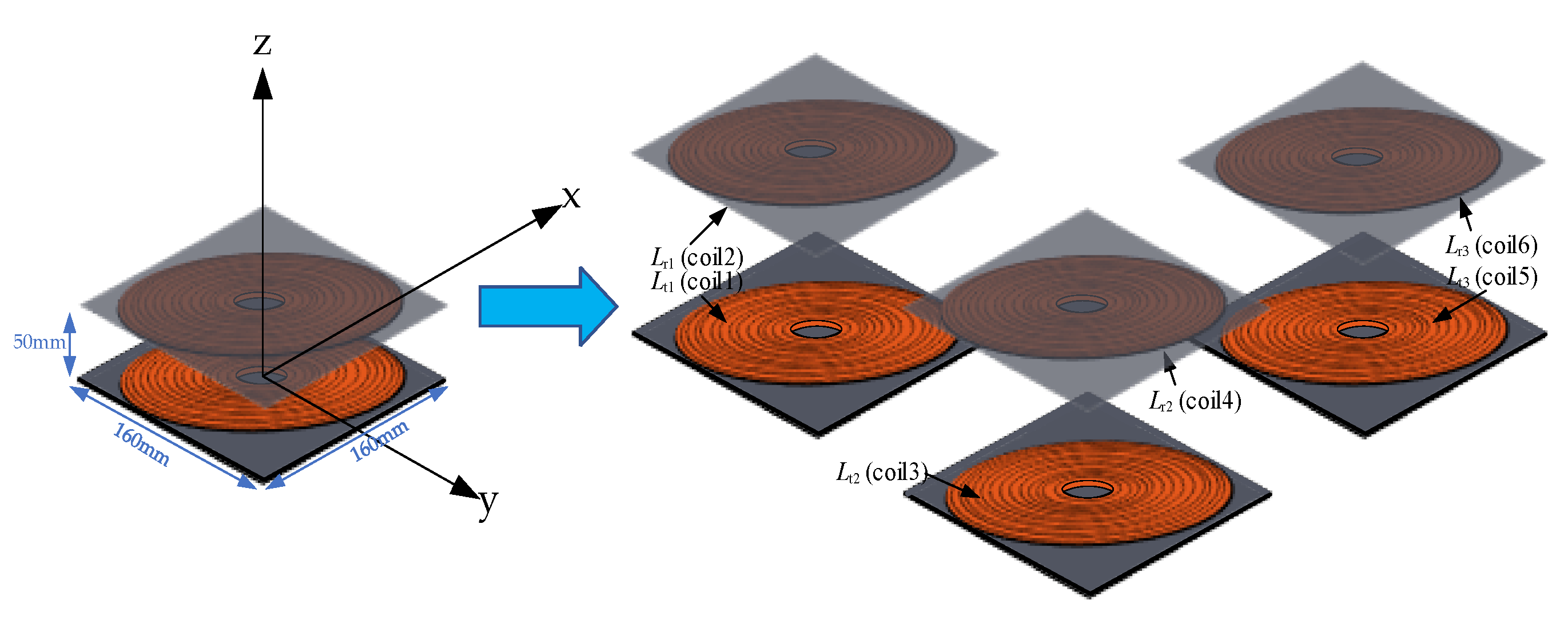
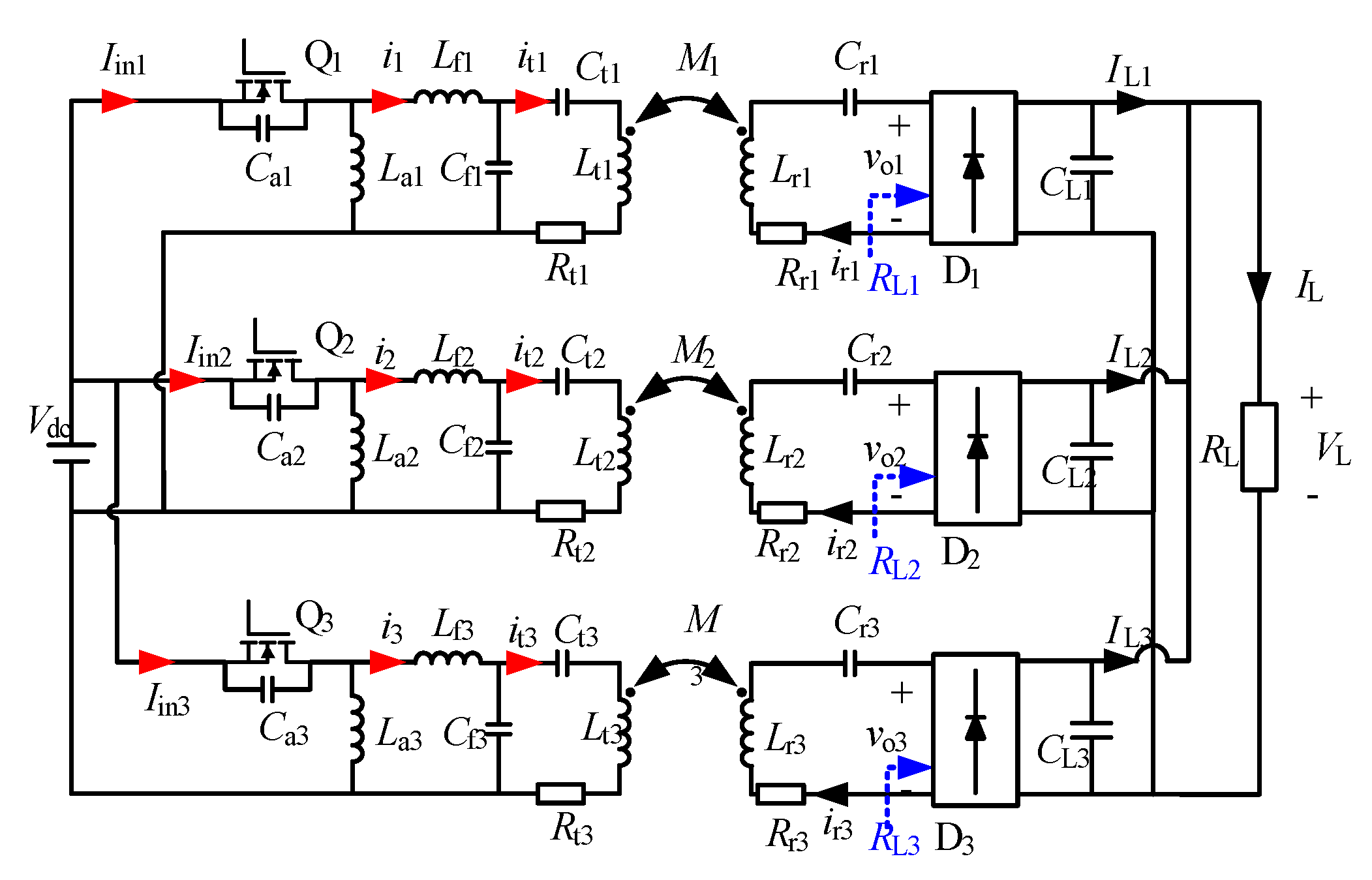

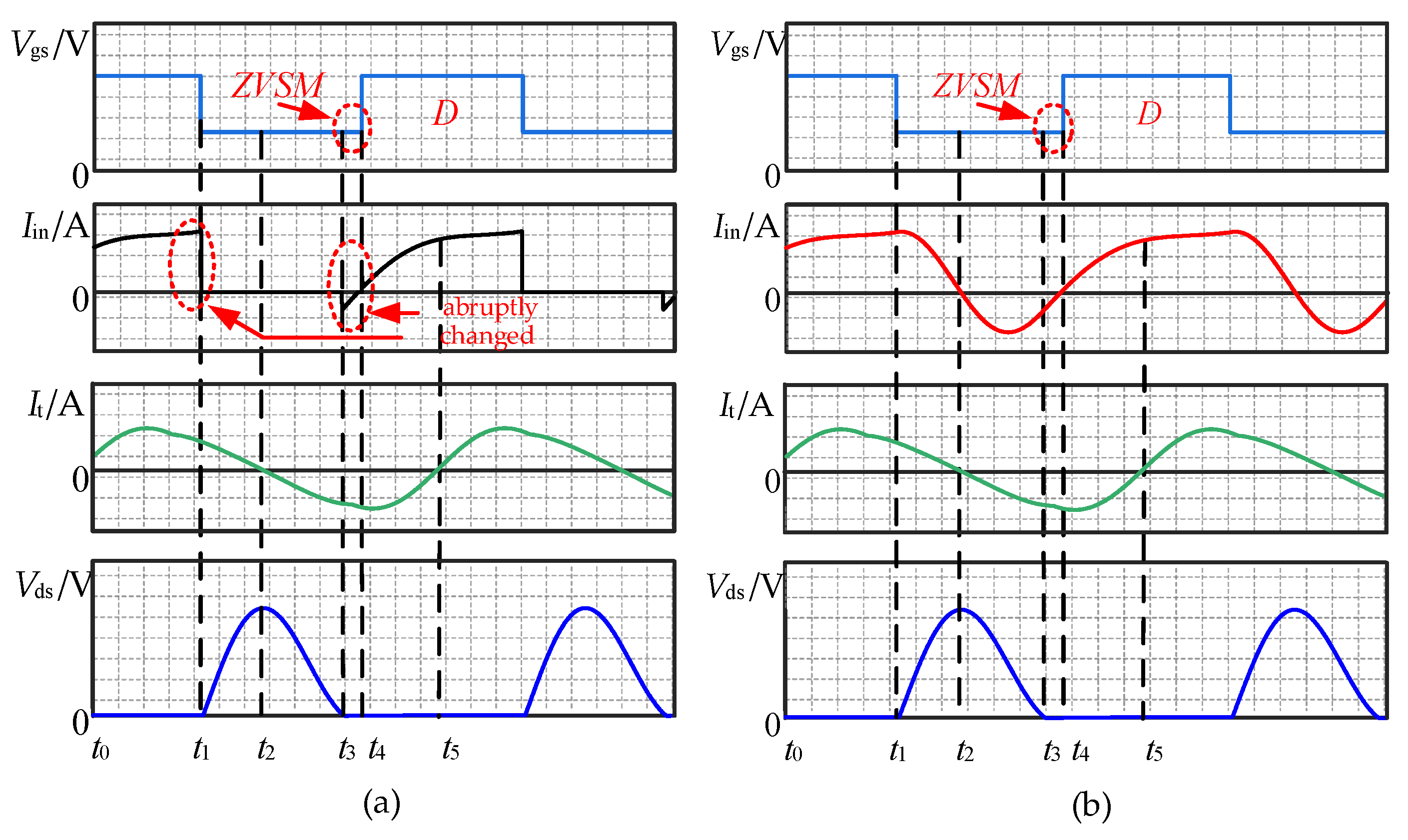
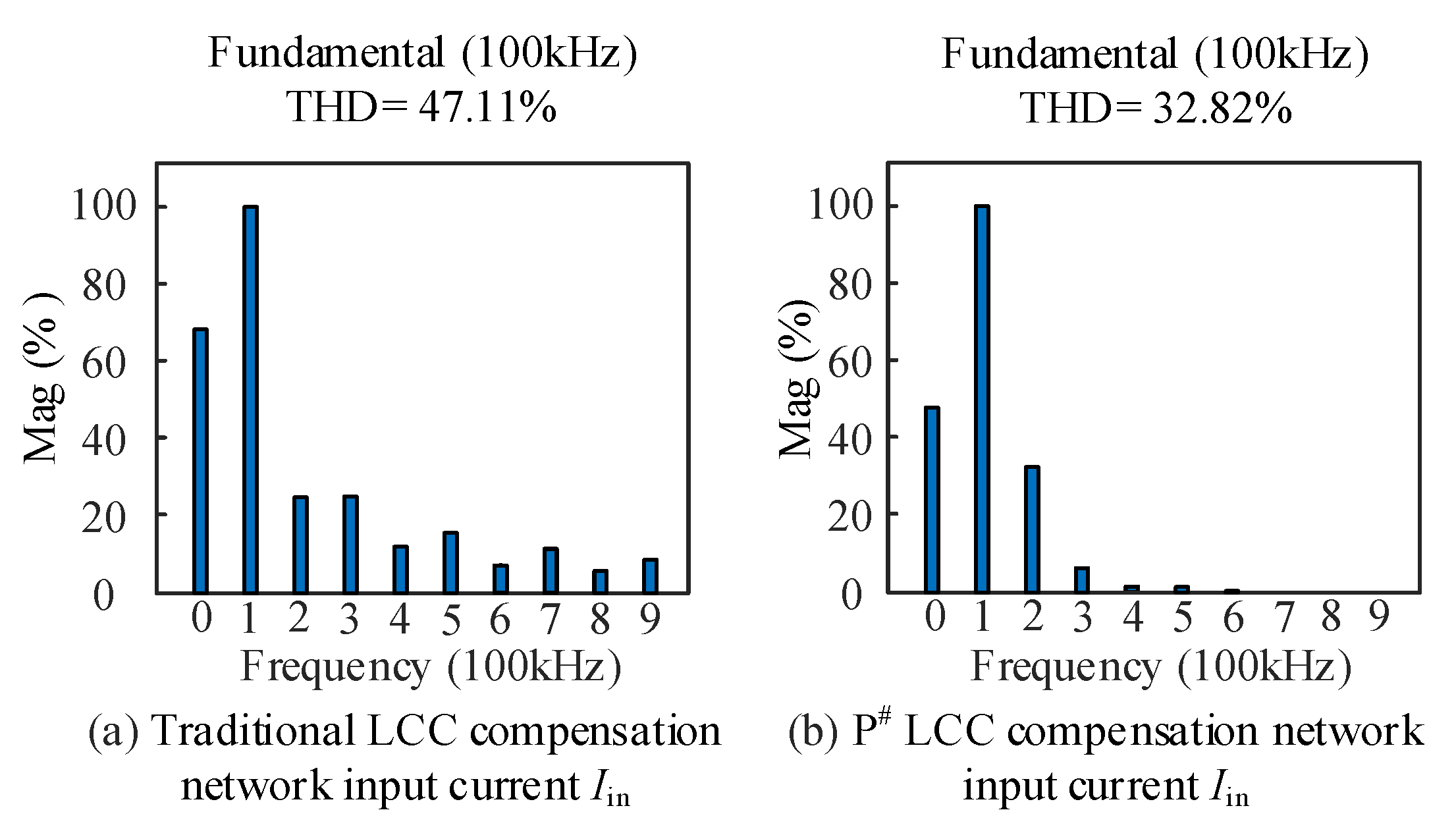

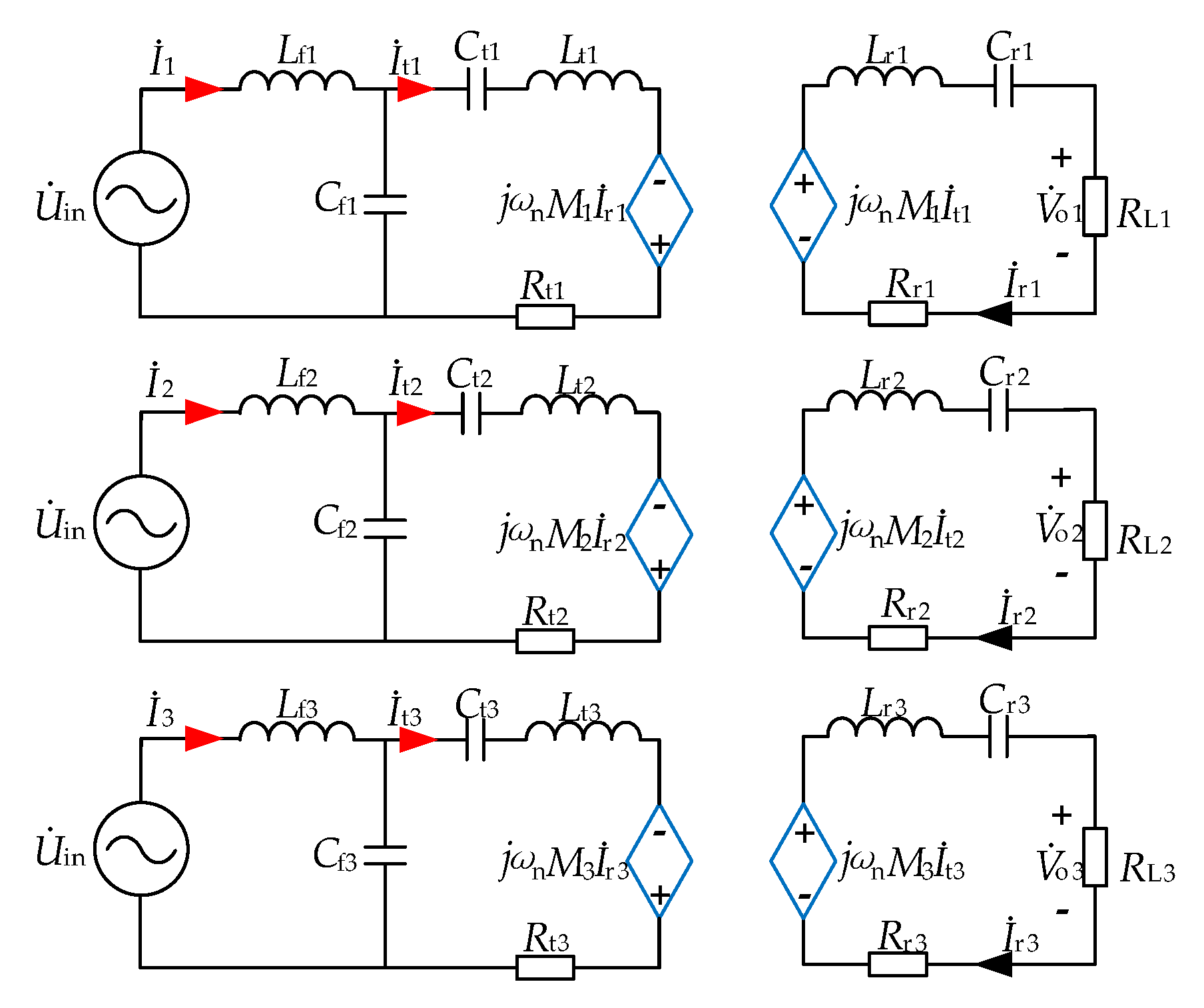


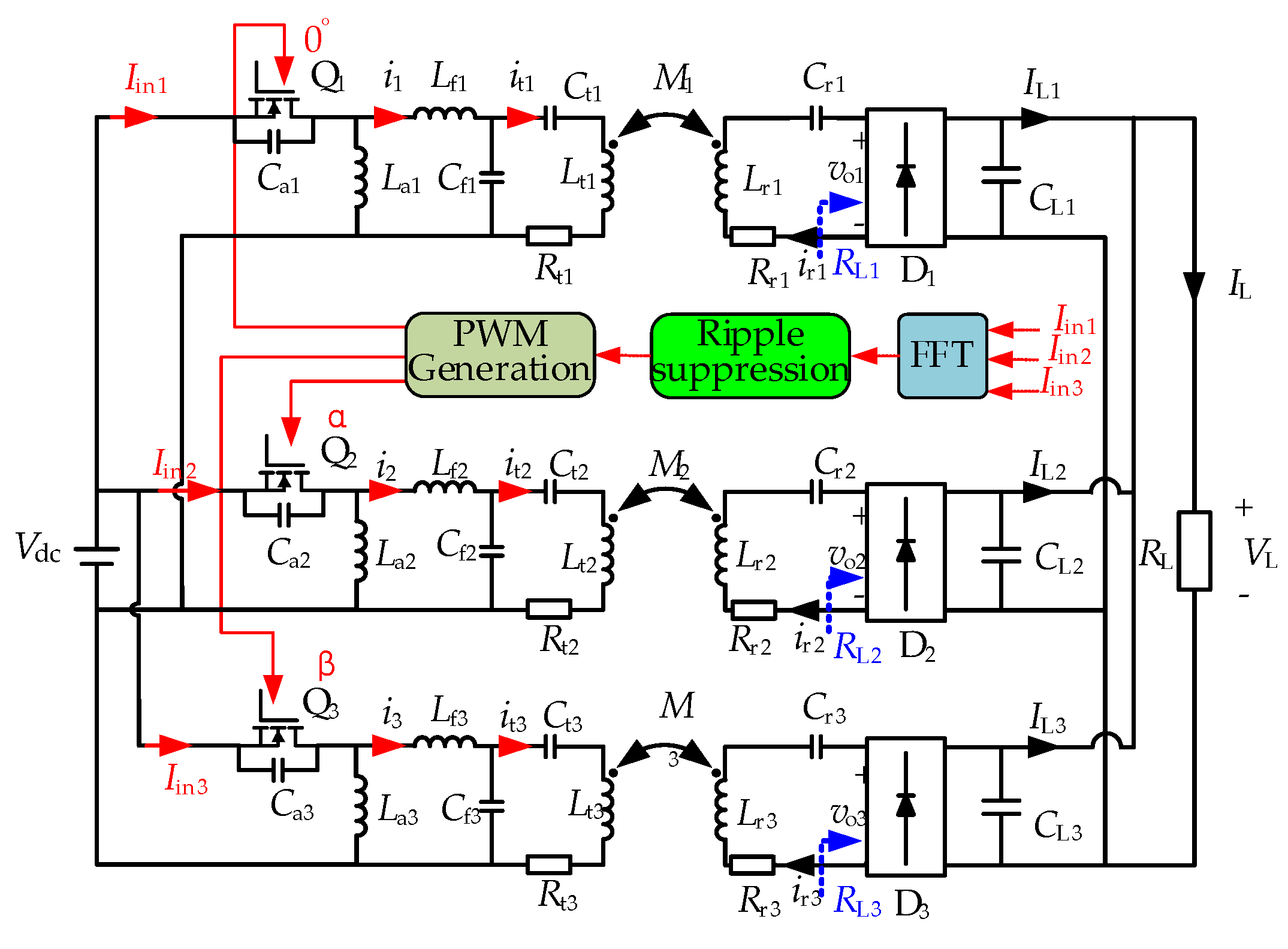
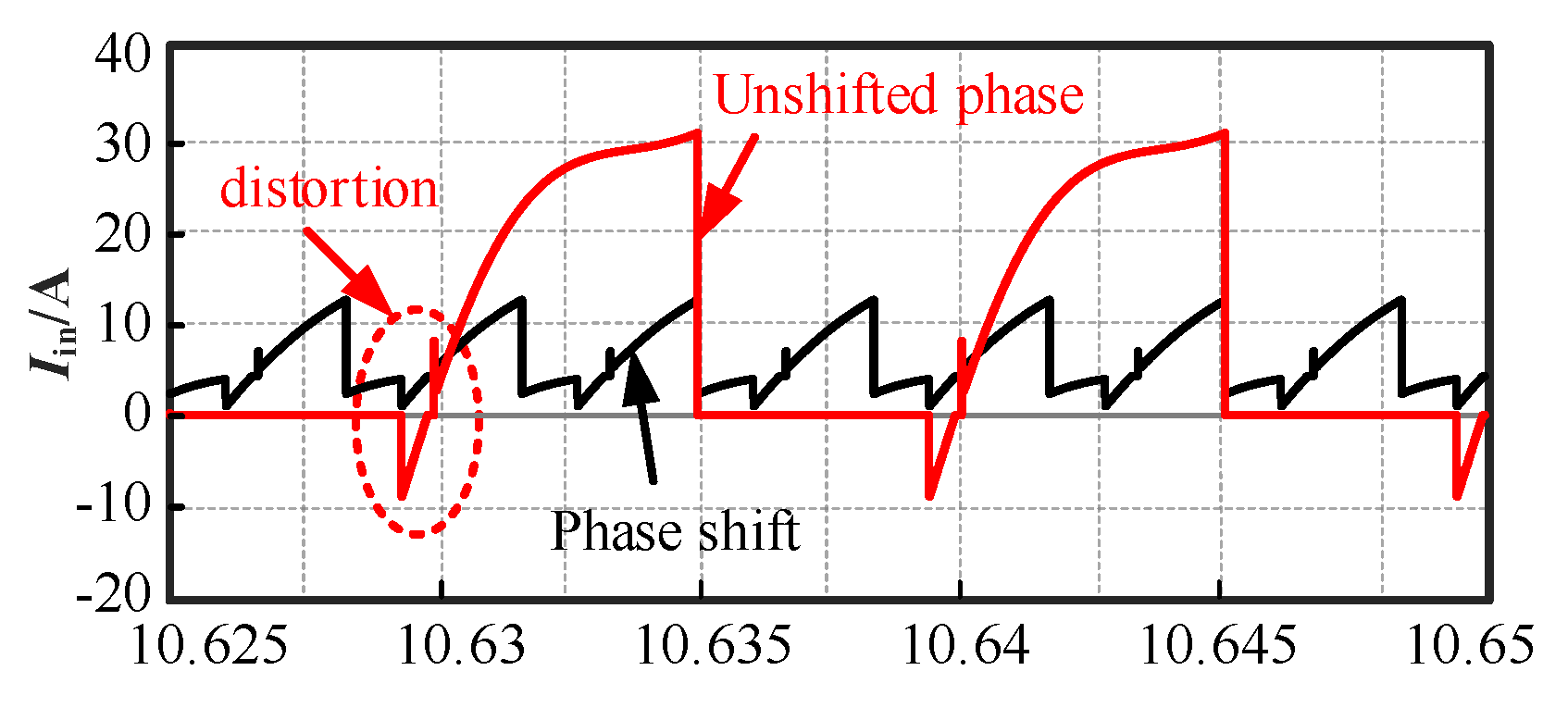
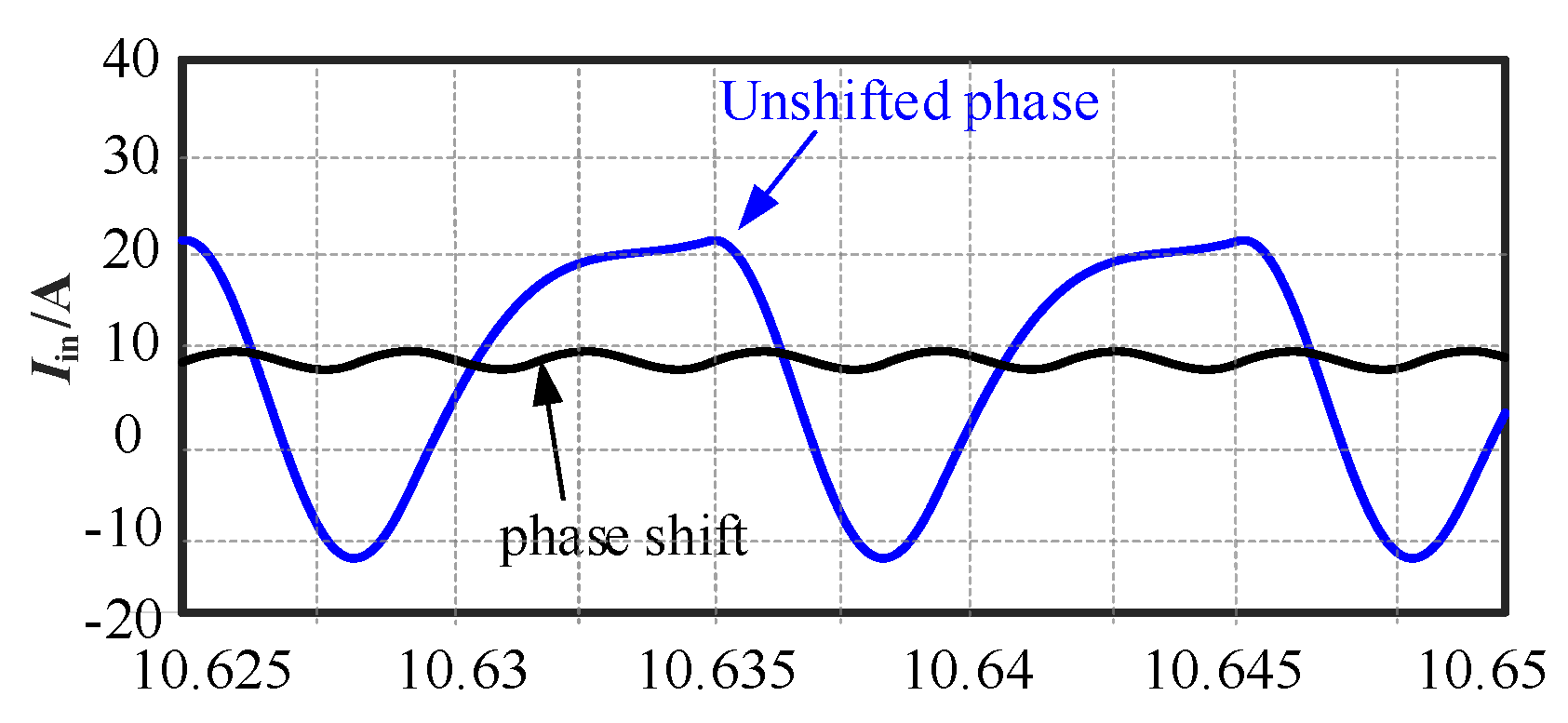
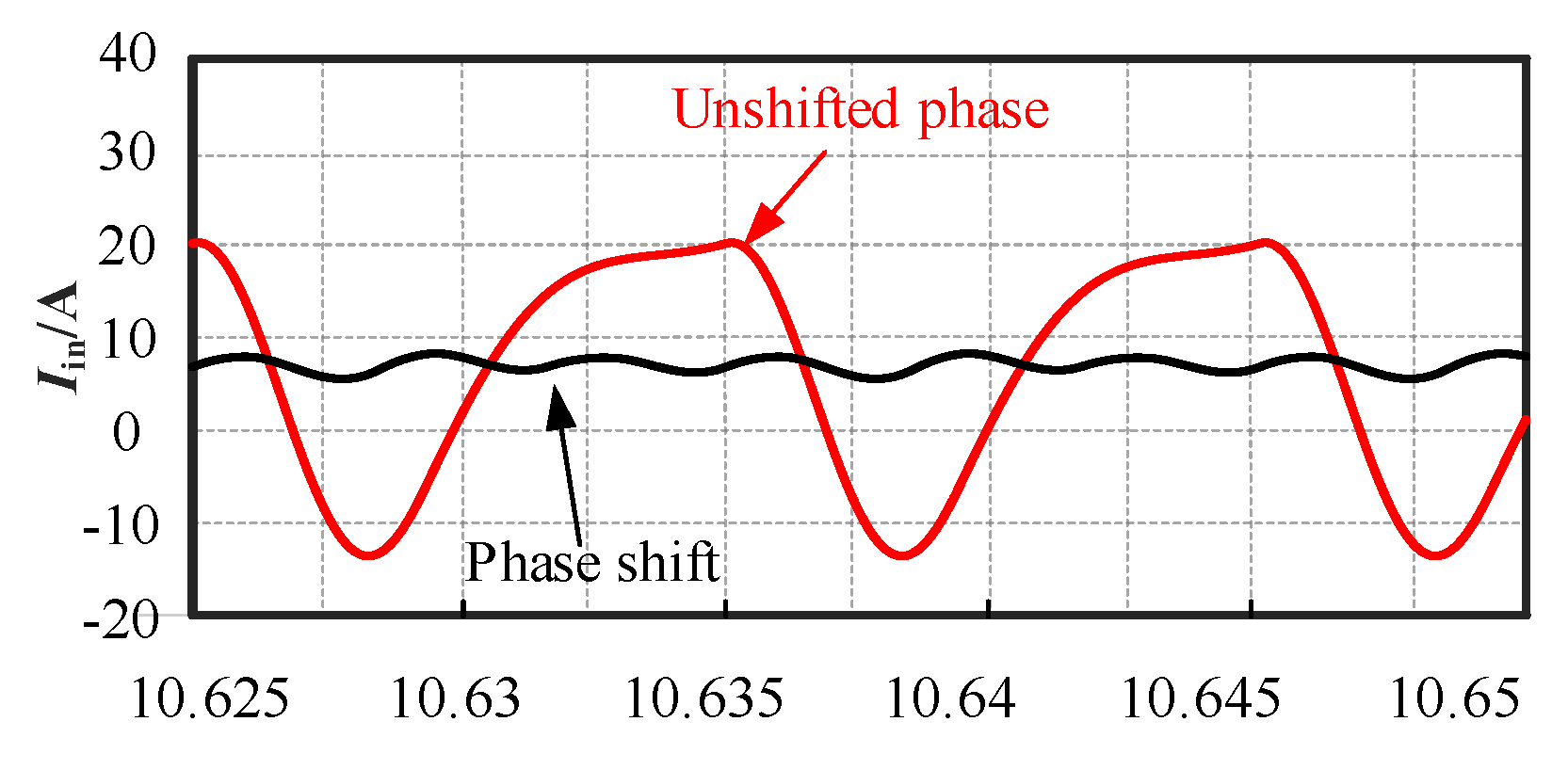

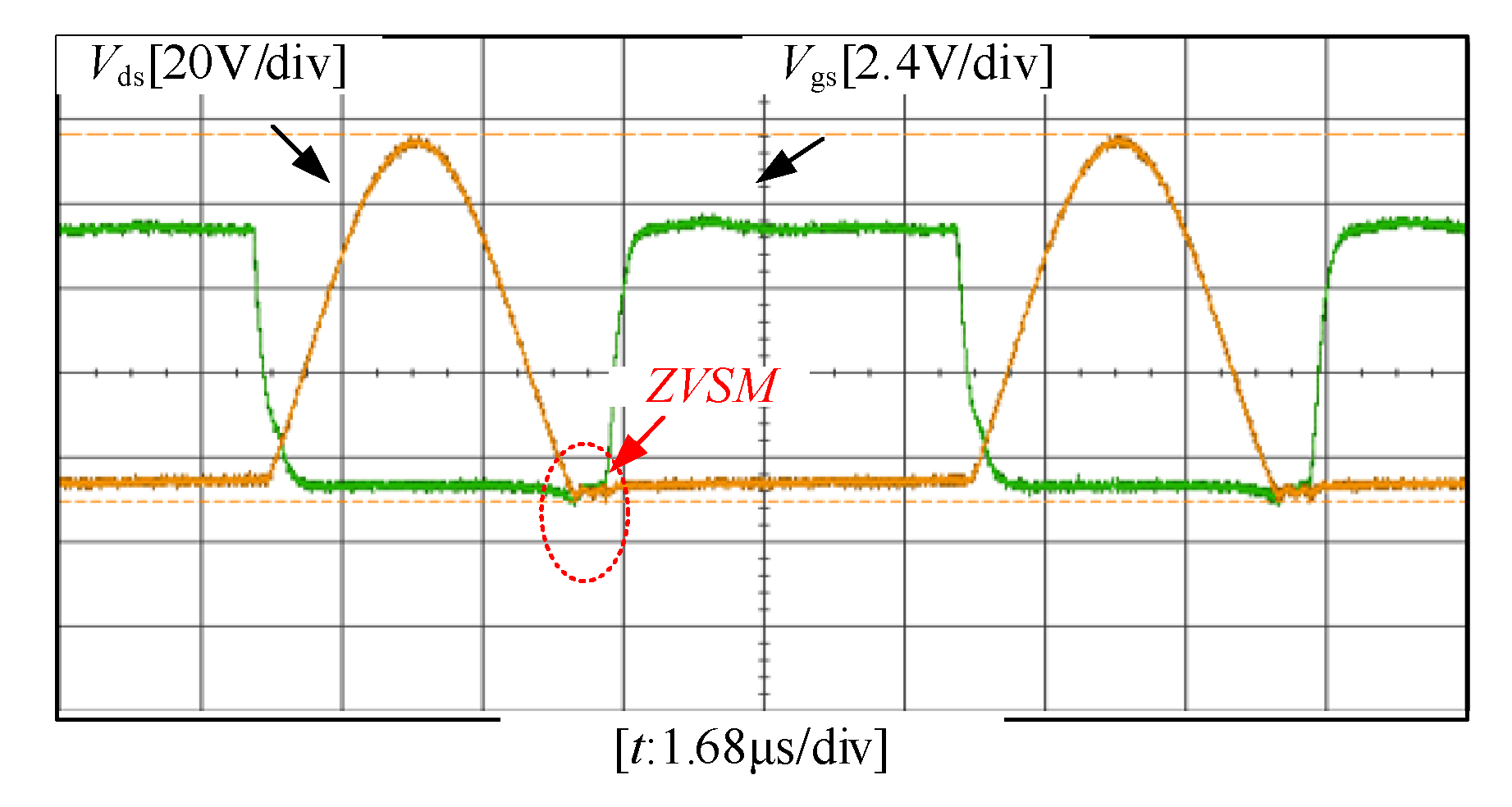
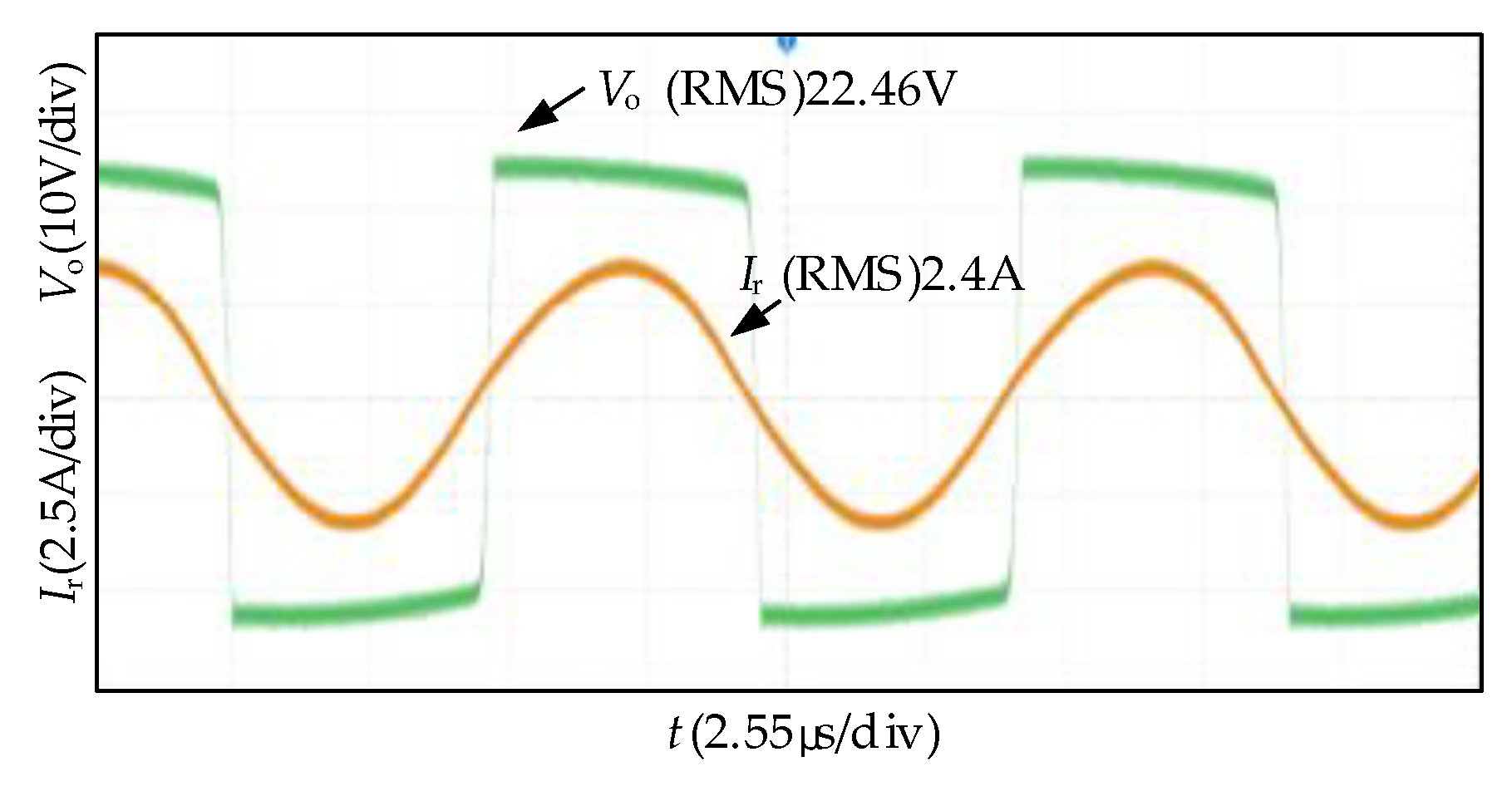

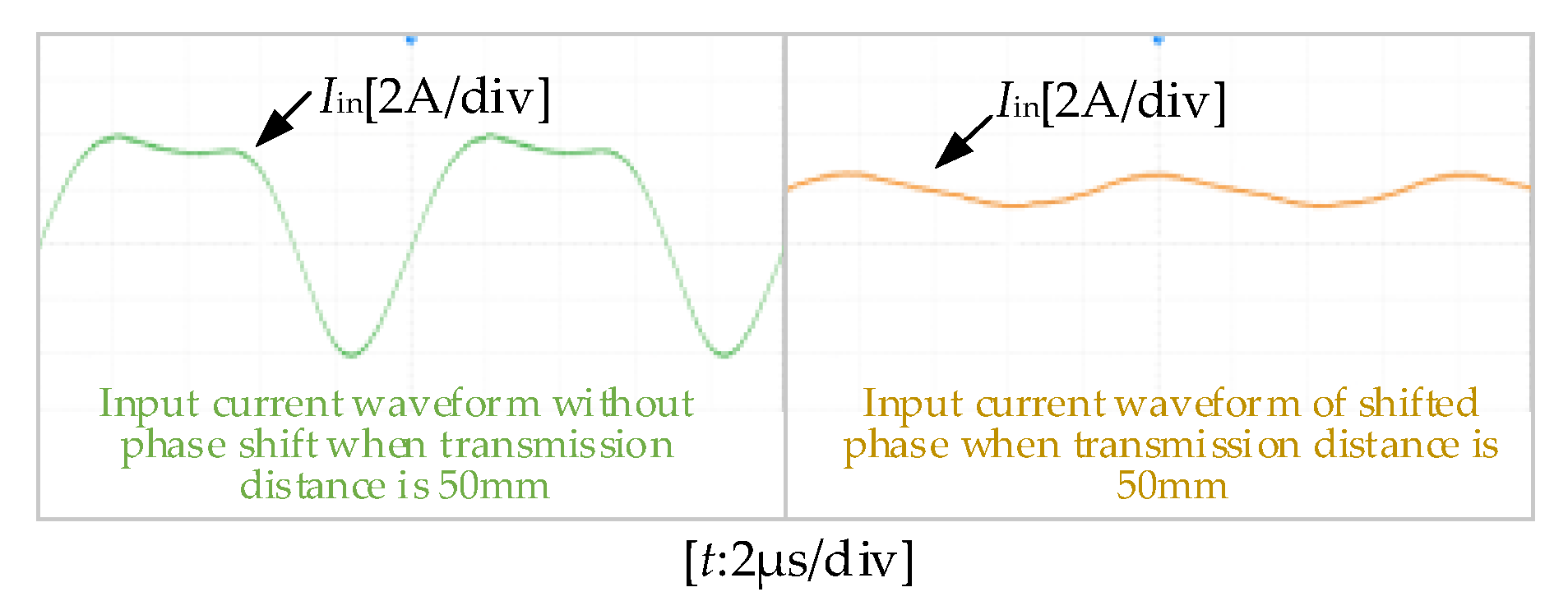
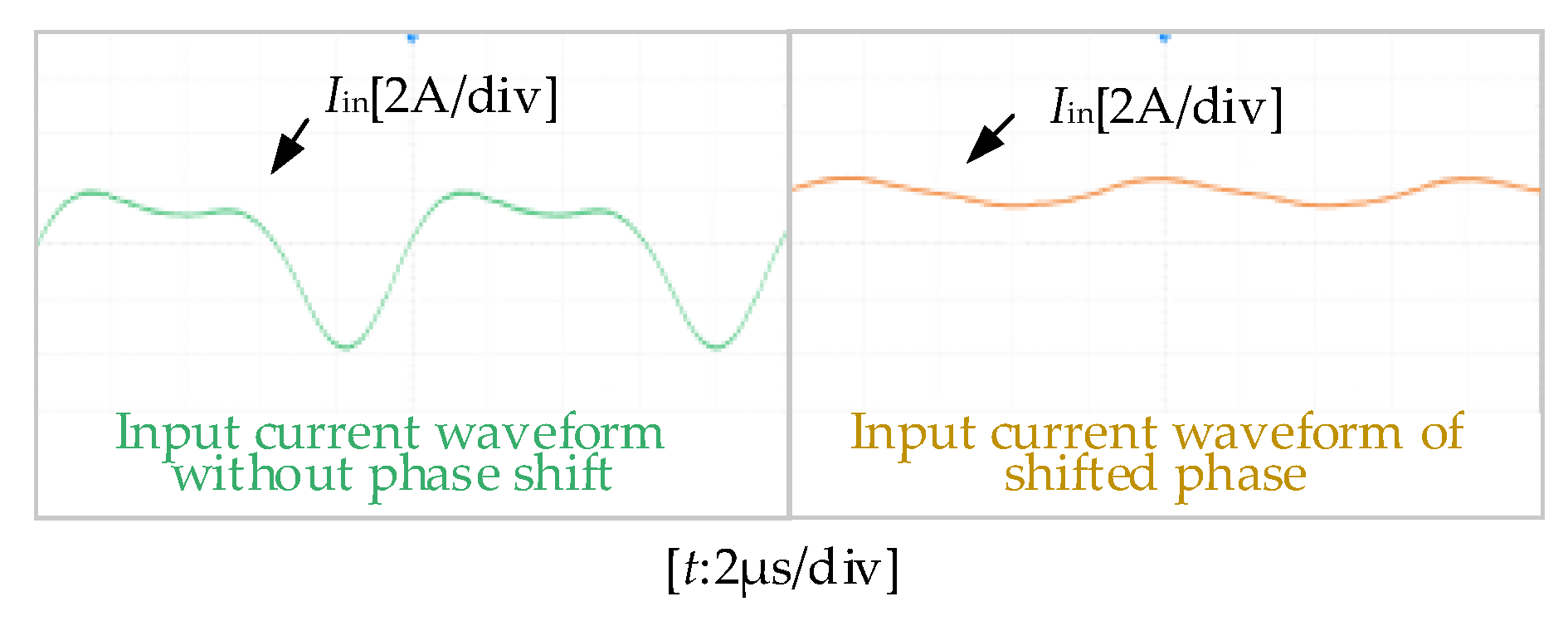
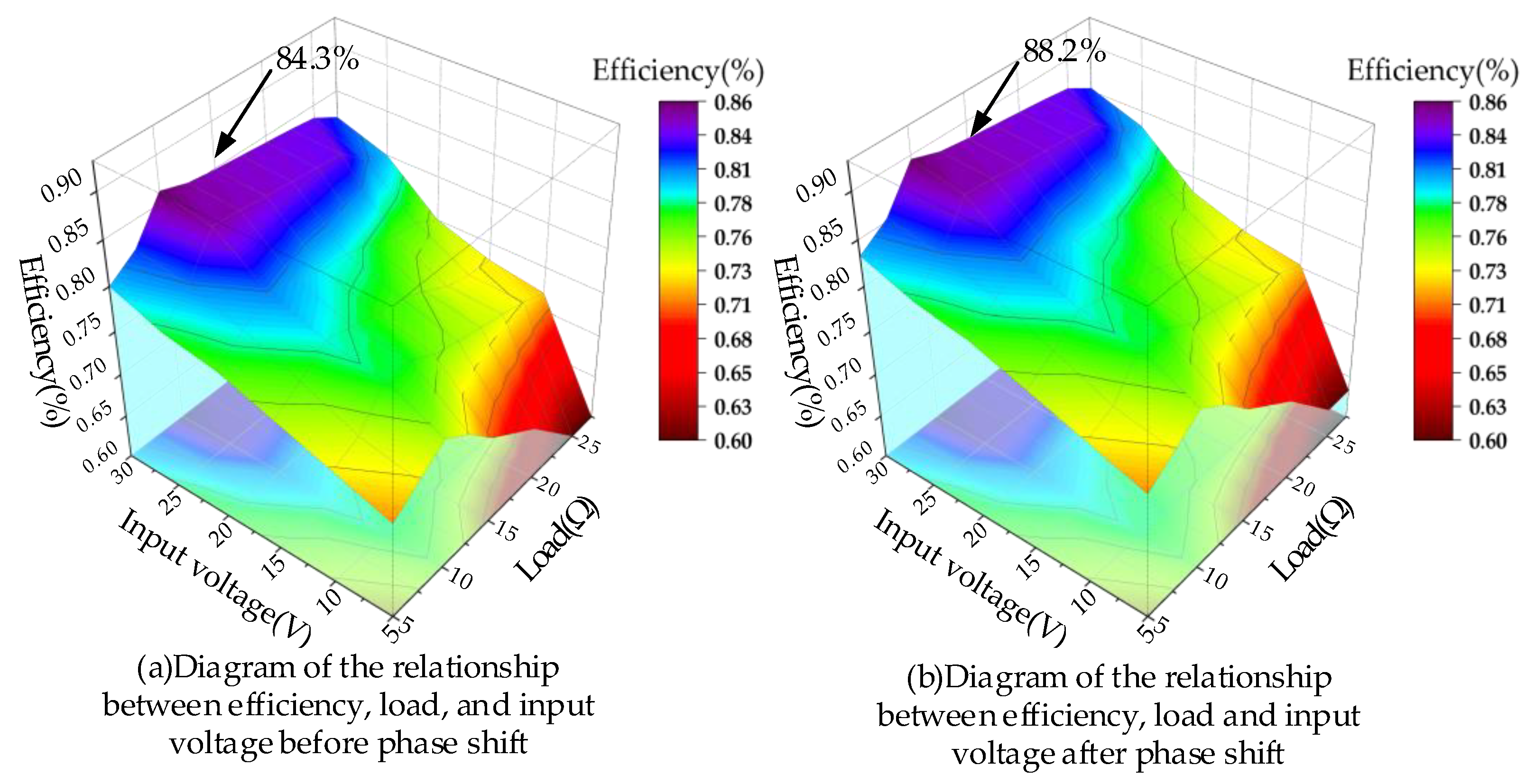
| Mode | The Traditional LCC Compensation Network | P# Type LCC Compensation Network |
|---|---|---|
| Stage 1 [t0–t1] | At time t0, the MOSFET is turned on. The resonance capacitor Ca is equivalently short-circuited. The input current Iin gradually decreases and crosses zero at time t1. | It is the same as the operating mode [t0–t1] of the traditional LCC compensation network. |
| Stage 2 [t1–t2] | At time t1, the MOSFET is turned off, so the input current Iin rapidly drops to zero. The excitation current it of the transmitter continues to drop to zero. | At time t1, the MOSFET is turned off. The input current Iin starts to decrease. The excitation current it of the transmitter continues to drop to zero. |
| Stage 3 [t2–t3] | At time t2, the current it increases in reverse, and Vds reaches the maximum. | At time t2, the input current Iin in creases to the maximum. The excitation current it of the transmitter increases in reverse. Vds reaches the maximum. |
| Stage 4 [t3–t4] | At time t3, the input current Iin rapidly increases in reverse and then starts to decrease. The Vds voltage is zero, and the MOSFET enters the soft switching stage. | At time t3, the input current Iin de creases to zero in reverse. The Vds voltage is zero, and the MOSFET enters the soft switching stage. |
| Stage 5 [t4–t5] | At time t4, the MOSFET is turned on. The excitation current It of the transmitter reversely decreases to zero. | It is the same as the operating mode [t4–t5] of the traditional LCC compensation network. |
| Stage 6 [t5–t0] | At time t5, the input current Iin and the excitation current it of the transmitter increase in a positive direction. | It is the same as the operating mode [t5–t0] of the traditional LCC compensation network. |
| Vdc | f | La | Ca | Lf | Cf | Ct |
| 25 V | 100 kHz | 6 μH | 187 nF | 60 μH | 42.2 nF | 77.5 nF |
| Lt | M | Cr | Lr | Rt | Rr | RL |
| 97.7 μH | 46.4 μH | 28.2 nF | 90.5 μH | 350 mΩ | 330 mΩ | 10 Ω |
Disclaimer/Publisher’s Note: The statements, opinions and data contained in all publications are solely those of the individual author(s) and contributor(s) and not of MDPI and/or the editor(s). MDPI and/or the editor(s) disclaim responsibility for any injury to people or property resulting from any ideas, methods, instructions or products referred to in the content. |
© 2023 by the authors. Licensee MDPI, Basel, Switzerland. This article is an open access article distributed under the terms and conditions of the Creative Commons Attribution (CC BY) license (https://creativecommons.org/licenses/by/4.0/).
Share and Cite
Yang, Y.; Zhang, X.; Guo, K.; Zhang, W.; Xie, S. Optimization of a Single-Switch Wireless Power Transfer Circuit Based on a Multi-Coil Array. Electronics 2023, 12, 2213. https://doi.org/10.3390/electronics12102213
Yang Y, Zhang X, Guo K, Zhang W, Xie S. Optimization of a Single-Switch Wireless Power Transfer Circuit Based on a Multi-Coil Array. Electronics. 2023; 12(10):2213. https://doi.org/10.3390/electronics12102213
Chicago/Turabian StyleYang, Yi, Xin Zhang, Ke Guo, Wenxin Zhang, and Shiyun Xie. 2023. "Optimization of a Single-Switch Wireless Power Transfer Circuit Based on a Multi-Coil Array" Electronics 12, no. 10: 2213. https://doi.org/10.3390/electronics12102213
APA StyleYang, Y., Zhang, X., Guo, K., Zhang, W., & Xie, S. (2023). Optimization of a Single-Switch Wireless Power Transfer Circuit Based on a Multi-Coil Array. Electronics, 12(10), 2213. https://doi.org/10.3390/electronics12102213







